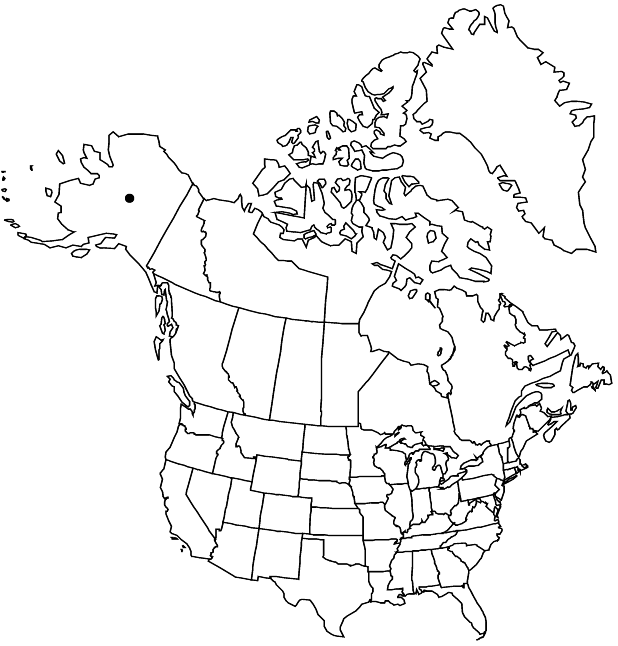Saxifraga bracteata
Trans. Linn. Soc. London 13: 367. 1822,.
Plants solitary or in usually loose tufts, not stoloniferous, weakly rhizomatous, (with bulbils). Leaves basal and cauline; petiole ± flattened, 10–70 mm, (± hairy); blade reniform, 5–7 (–11) -lobed (lobes obtuse, sometimes acute), (5–) 7.4–11.2 (–20) mm, slightly fleshy, margins entire, sparsely glandular-ciliate or eciliate, apex rounded to obtuse, surfaces glabrous or sparsely short-stipitate-glandular. Inflorescences 2–6 (–29) -flowered, capitate thyrses, sometimes solitary flowers, (flowers subsessile), (3–) 5–15 (–18) cm, densely tangled, reddish brown-hairy; bracts (5–10), petiolate, (3–7-lobed, densely surrounding inflorescence). Flowers: (hypanthium U-shaped in longisection); sepals erect, oblong to ovate, margins ± glandular-ciliate, surfaces glabrous or sparsely short-stipitate-glandular; petals white, not spotted, ± broadly elliptic to obovate, 2–5 (–6.5) mm, ± equaling sepals; ovary ca. 1/2 inferior. 2n = 26 (Russian Far East).
Phenology: Flowering summer.
Habitat: Rocky ledges and slopes, coastal
Elevation: 0-500 m
Distribution

Alaska, e Asia (n Japan), e Asia (Russian Far East)
Discussion
Selected References
None.
Lower Taxa
"full" is not a number.